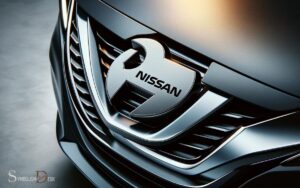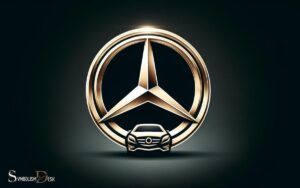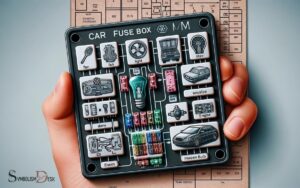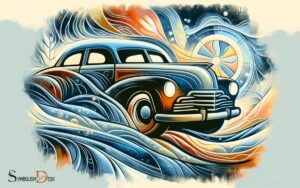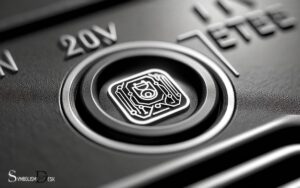European Car Symbols and Names: Explanations!
European car symbols and names embody the heritage and vision of the continent’s storied automotive industry.
Each logo, from Audi’s interlocking rings to Lamborghini’s raging bull, encapsulates the unique identity and history of the brand it represents.
These emblems are not mere graphics but are symbolic of the automakers’ founding principles and their commitment to excellence in engineering and design.
The significance of European car symbols and names can be appreciated through their historical context and design elements: Car symbols and names from European manufacturers often have deep historical roots, reflecting the rich automotive heritage of the region. Additionally, the design elements of these car symbols often incorporate national motifs, colors, and cultural influences, further adding to their significance. When examining European car symbols, it is important to consider the car symbol buttons meanings as they can offer insights into the company’s brand identity, values, and technological innovations.
These are just a few examples of how European car emblems are rooted in the automakers’ legacies and aspirations.
Discover the stories behind Europe’s iconic automotive emblems and celebrate the rich tapestry of design and heritage they represent.
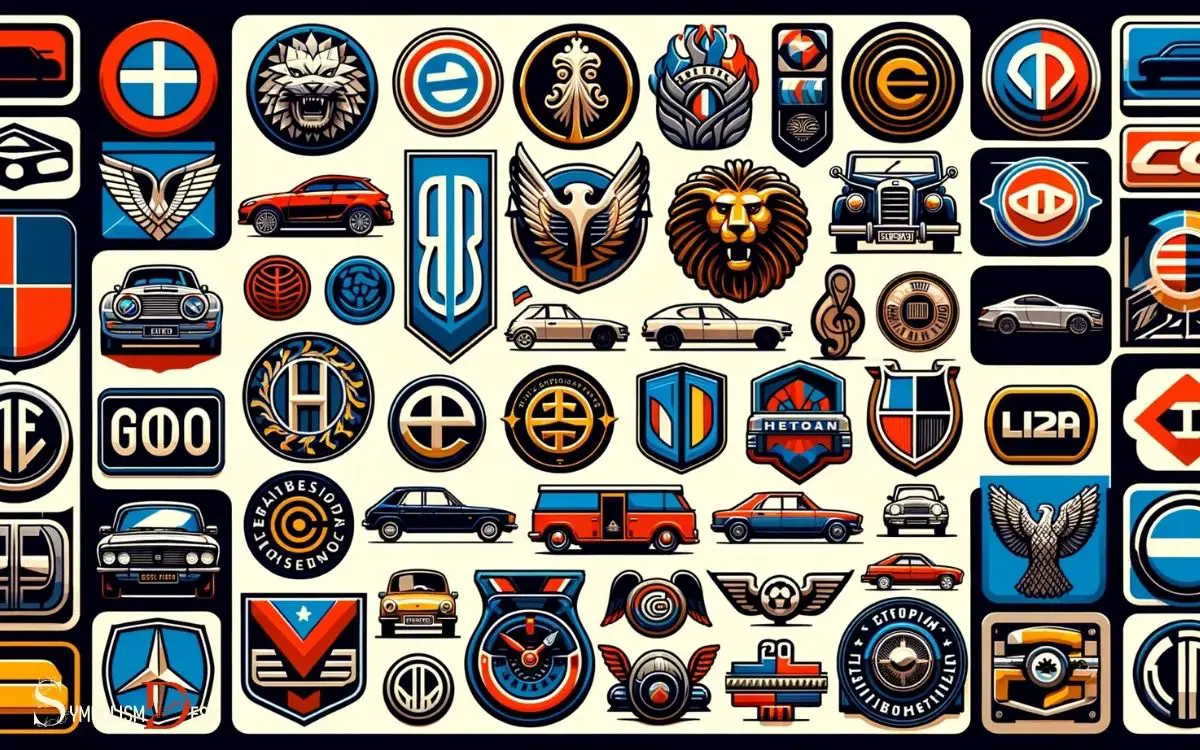
Key Takeaway
Guide to European Car Logos: Symbols and Brand Histories
| Brand | Symbol Description | Origin Story and Significance |
|---|---|---|
| BMW | Blue and white roundel | Inspired by the Bavarian flag, symbolizing the brand’s origin and its aeronautical roots. |
| Ferrari | Prancing horse on yellow background | Tribute to Italian WWI hero Francesco Baracca; signifies speed and courage. |
| Audi | Four interlocking rings | Represents the merging of four companies to create Auto Union; unity and strength. |
| Lamborghini | Charging bull | Represents the founder’s zodiac sign, Taurus, and embodies power and strength. |
| Mercedes-Benz | Three-pointed star in a circle | Symbolizes dominance in land, sea, and air transportation. |
| Porsche | Horse in Stuttgart coat of arms | Reflects the brand’s roots in Stuttgart, known for its horse-breeding heritage. |
| Volvo | Male gender symbol and circle with arrow | Represents iron, strength, and safety in Swedish tradition. |
| Citroën | Double chevron | Mimics gear teeth, representing technical innovation and machinery. |
| Peugeot | Lion on an arrow | Originally a symbol of strength and flexibility in the company’s saw blade products. |
| Alfa Romeo | Red cross and serpent | A combination of Milan’s emblem and a symbol of the Visconti family legacy. |
The Evolution of the BMW Roundel
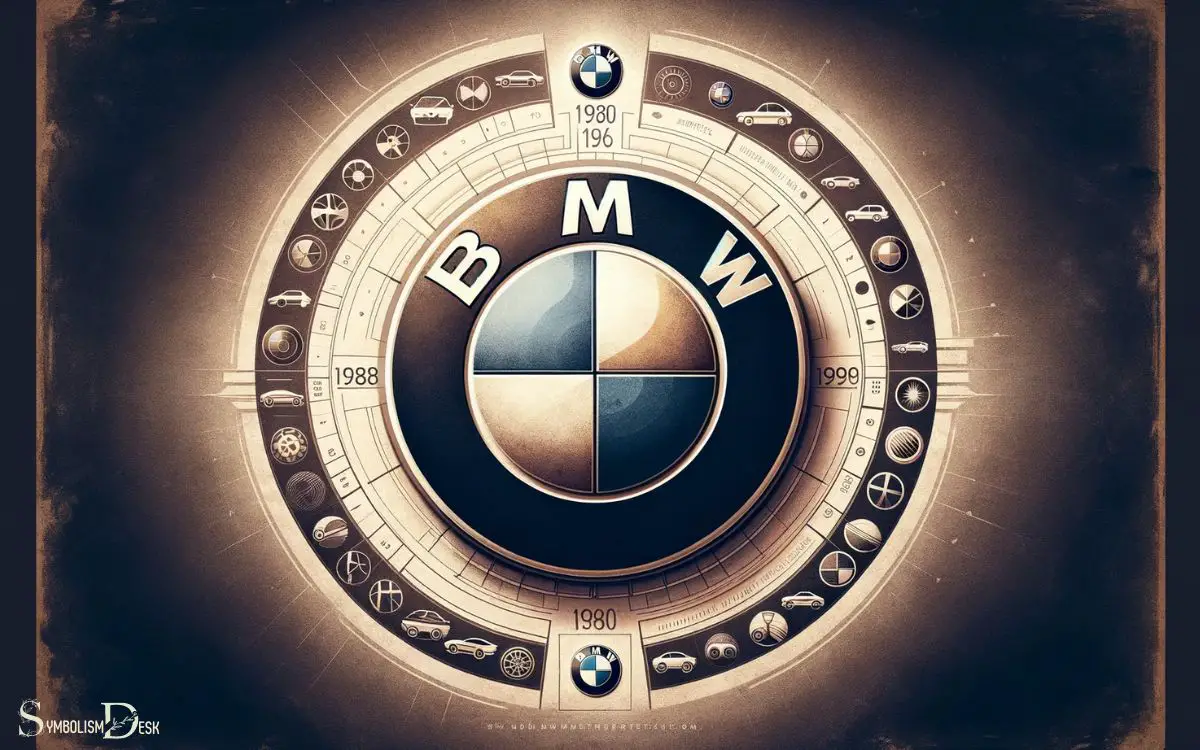
The evolution of the BMW roundel began with its first appearance in 1917. The design, which is often mistaken for an airplane propeller in motion, actually stems from the company’s origins as an aircraft engine manufacturer.
The blue and white colors represent the state colors of Bavaria, where BMW is headquartered. Over the years, the roundel has undergone subtle changes, but its core symbolism has remained constant.
The outer circle, which was originally black, was changed to blue to better align with the Bavarian colors. The font inside the roundel has been modernized, and the overall shape has been streamlined.
These refinements have kept the roundel current while honoring its rich history, making it a timeless symbol of BMW’s heritage and innovation.
Unraveling the Mystery of the Ferrari Prancing Horse
Unraveling the mystery of the Ferrari Prancing Horse reveals a captivating tale of passion, power, and tradition deeply intertwined with the brand’s identity.
The iconic symbol, featuring a black prancing stallion on a yellow background, has become synonymous with the luxury and performance that define Ferrari.
The prancing horse dates back to World War I when the legendary Italian fighter ace Francesco Baracca painted a prancing horse on his plane, a symbol of good luck.
Enzo Ferrari, later meeting Baracca’s parents, was encouraged to use the prancing horse on his cars for good luck. Since then, the symbol has represented speed, power, and a spirit of competition.
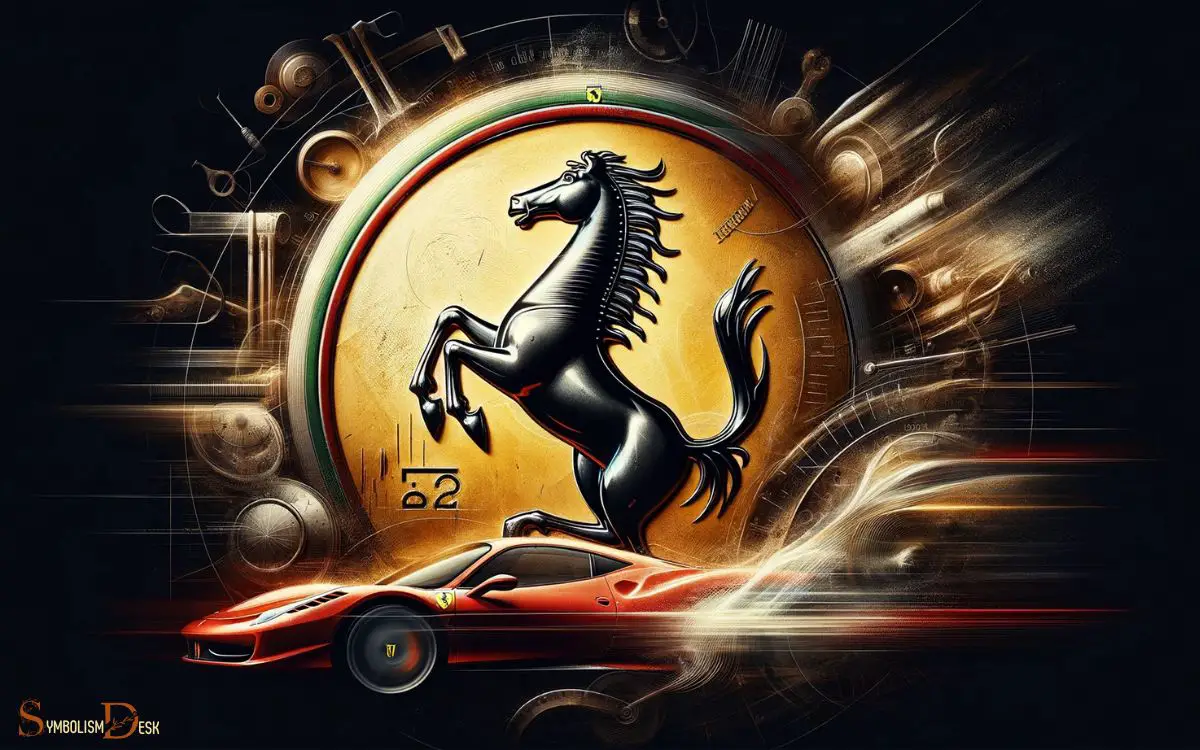
The table below further captures the essence of the Ferrari Prancing Horse:
| Symbol | Meaning |
|---|---|
| Prancing Horse | Represents speed, power, and competition |
| Yellow Background | Signifies the color of Modena, Enzo Ferrari’s birthplace |
| Black Horse | Symbolizes the prancing horse of the World War I Italian fighter ace, Francesco Baracca |
Lamborghini: The Story Behind the Bull Emblem
The Lamborghini emblem, featuring a raging bull, has a deep-rooted significance that traces back to the founder’s inspiration. The bull symbolizes strength, power, and determination, reflecting the essence of the Lamborghini brand.
Understanding the story behind the bull emblem provides valuable insights into the ethos and vision of the iconic car manufacturer.
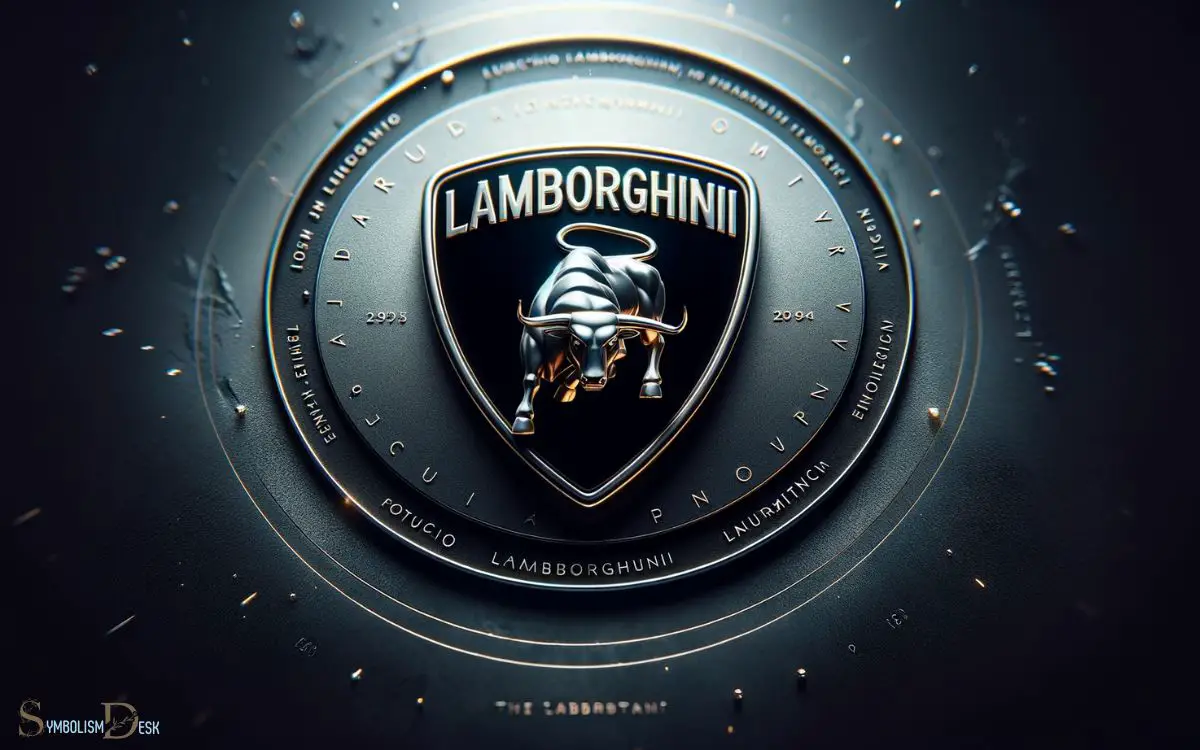
Bull as Symbol
Italian car manufacturer Lamborghini adopted a fierce bull as its emblem in 1963, symbolizing strength and power. The bull symbolizes Lamborghini’s core values of power, determination, and fearlessness.
The company’s founder, Ferruccio Lamborghini, was inspired by his zodiac sign, Taurus, which is represented by a bull.
The choice of the bull as the emblem also pays homage to the famous bullfighting tradition in Spain, where strong and majestic bulls are revered for their power and agility.
The emblem perfectly encapsulates the essence of Lamborghini’s vehicles – powerful, fierce, and untamed.
Below is an imagery-evoking table representing the significance of the bull as Lamborghini’s emblem:
| Symbolism | Representation |
|---|---|
| Strength | Power and resilience |
| Determination | Unyielding and unwavering |
| Fearlessness | Boldness and courage |
Lamborghini’s founder’s inspiration for using the bull as its emblem stems from his zodiac sign and the traditional Spanish bullfighting culture.
Lamborghini’s Founder’s Inspiration
Ferruccio Lamborghini’s inspiration for using the bull as the emblem for his car company stemmed from his zodiac sign and the traditional Spanish bullfighting culture, reflecting his personal values of strength, determination, and fearlessness.
Born under the Taurus zodiac sign, Lamborghini identified with the strength and power often associated with bulls.
Additionally, he was deeply influenced by the traditional Spanish bullfighting culture, which symbolized vitality and force.
This emblem not only represented Lamborghini’s personal values but also embodied the characteristics of the cars his company produced – powerful, fierce, and untamed.
The choice of the bull as the company emblem was a testament to Lamborghini’s aspiration to create vehicles that exude strength and dominance, a legacy that continues to define the brand’s identity to this day.
Exploring the Heritage of the Mercedes-Benz Star
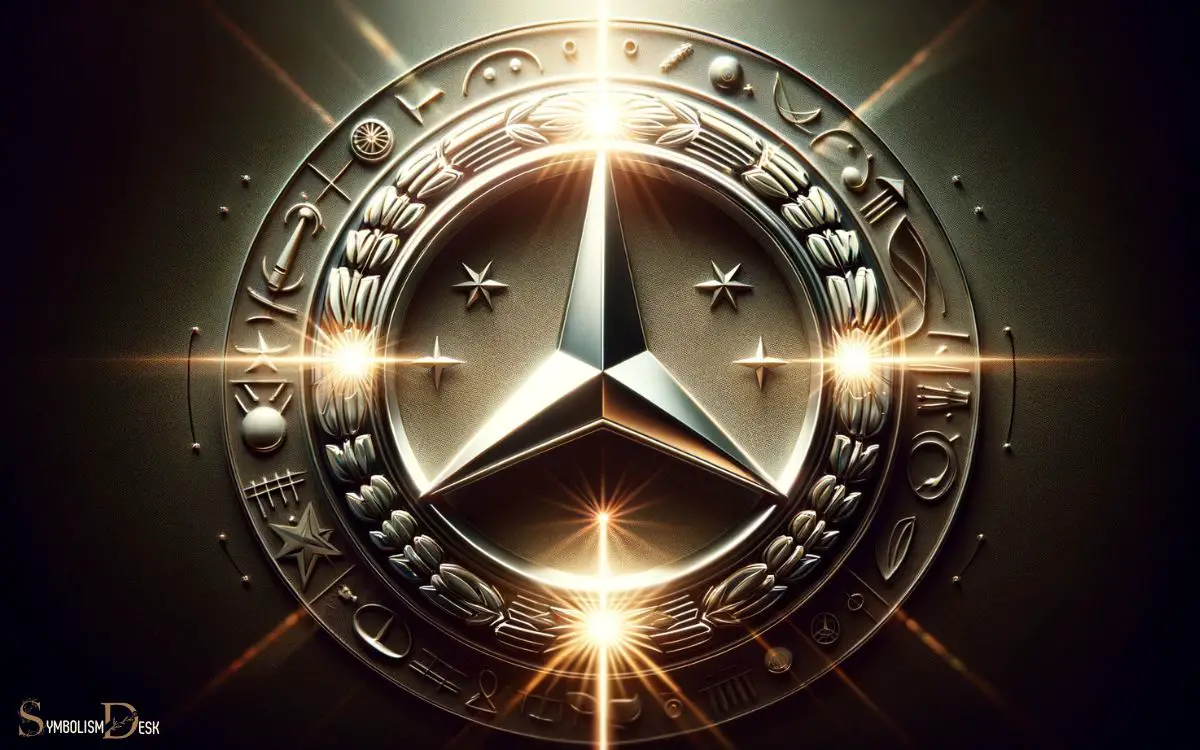
One may trace the heritage of the Mercedes-Benz star back to its origins in the late 19th century. The iconic symbol represents the brand’s commitment to luxury, innovation, and engineering excellence.
The three-pointed star reflects the company’s aspiration for dominance on land, sea, and air. It originates from a postcard that Daimler, the company’s co-founder, sent to his family, stating that the star would one day shine over his factory like a guiding light.
Over time, the star has become synonymous with the brand’s uncompromising quality and groundbreaking technological advancements.
Today, it stands as a testament to the enduring legacy of Mercedes-Benz and its enduring commitment to pioneering automotive design and performance.
Aston Martin: The Wings of Speed and Luxury
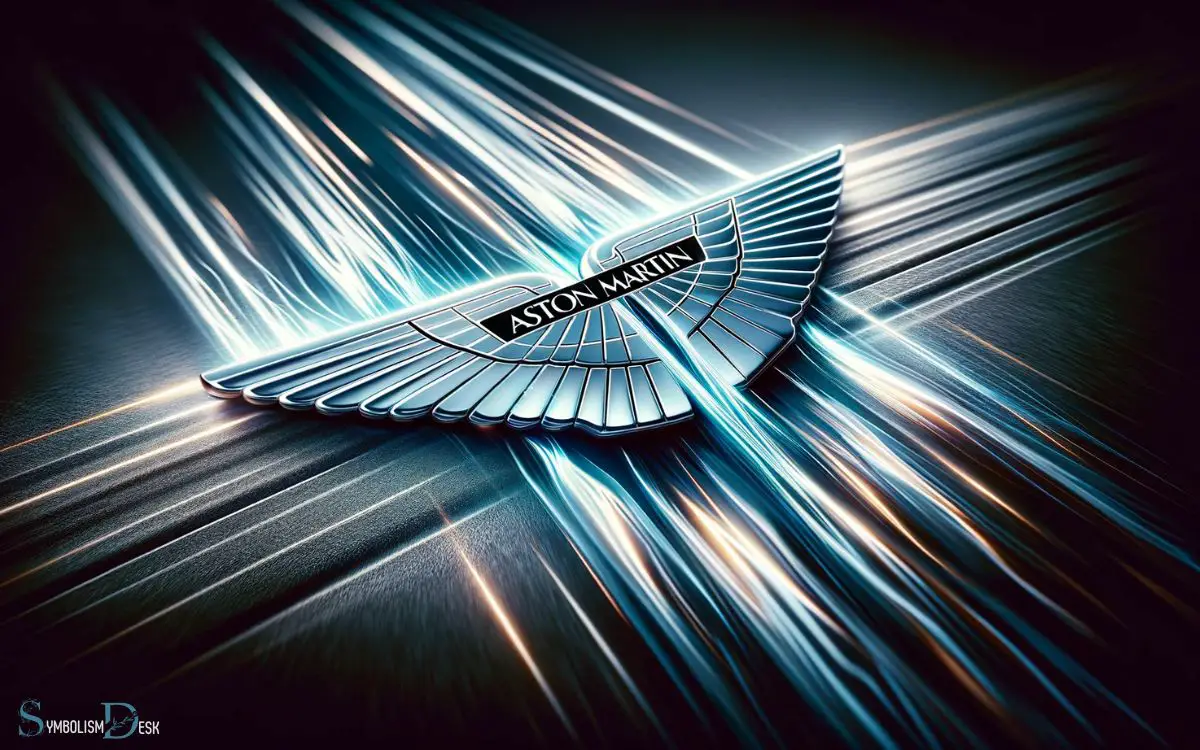
The iconic symbol representing Aston Martin, known as ‘The Wings of Speed and Luxury,’ embodies the brand’s heritage of elegance and performance.
The emblem, featuring the outstretched wings of a bird, is a symbol of freedom, power, and speed, perfectly encapsulating the essence of Aston Martin’s luxury sports cars.
The emblem has a rich history, dating back to the company’s racing origins in the early 1920s. Today, it continues to symbolize the fusion of exceptional speed and refined luxury that defines Aston Martin.
The emblem’s design reflects the brand’s commitment to innovation and its relentless pursuit of automotive excellence.
- The emblem’s outstretched wings symbolize freedom and power.
- It reflects the brand’s racing heritage and commitment to performance.
- The emblem captures the fusion of speed and luxury in Aston Martin vehicles.
- Its design represents the brand’s dedication to innovation and excellence.
- The emblem embodies the timeless elegance and sophistication of Aston Martin.
Alfa Romeo: The Cross and Serpent Symbol
Alfa Romeo’s iconic emblem, featuring a red cross and a crowned serpent, holds deep symbolic significance that reflects the brand’s rich history and heritage.
The evolution of this emblem over the years mirrors the changes and developments within the company, making it a fascinating subject for analysis.
Understanding the origins and meaning behind the cross and serpent symbol provides valuable insights into the identity and values of Alfa Romeo as a prestigious automotive manufacturer.
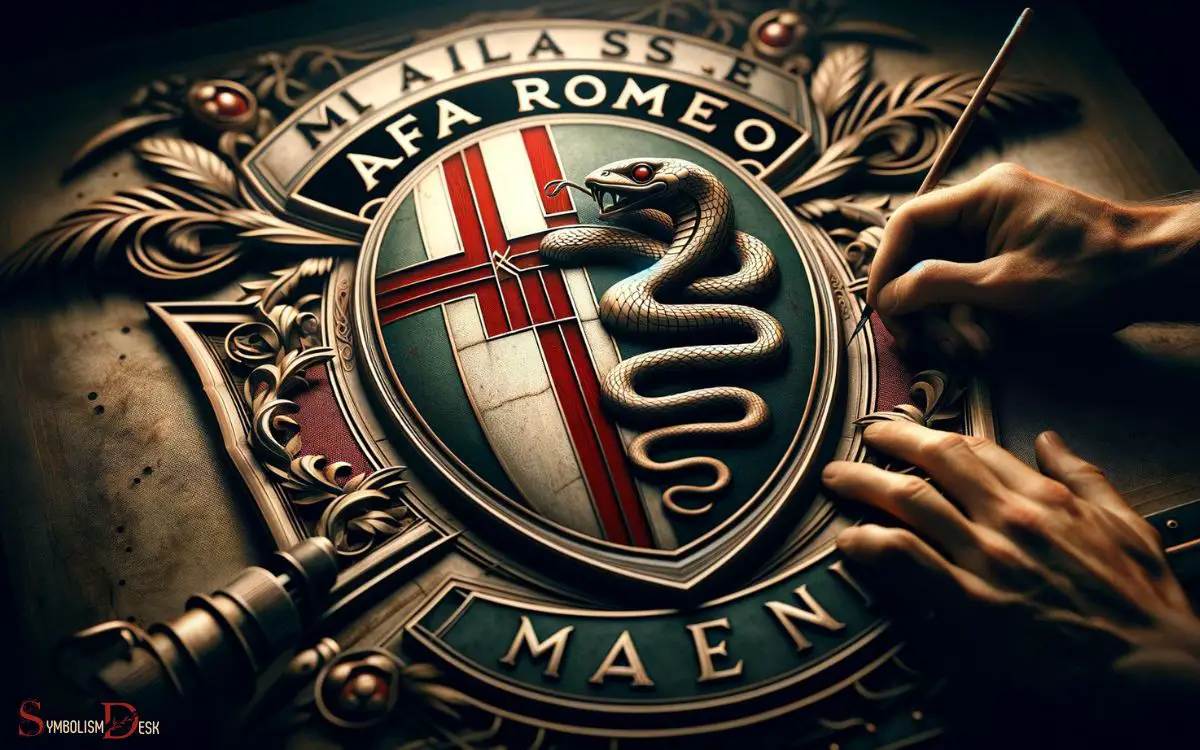
Symbolic Significance of Alfa Romeo
The cross and serpent symbol on Alfa Romeo vehicles represents a powerful blend of historical significance and modern elegance. The symbol, known as the Visconti serpent or the Biscione, has deep roots in Italian history and has been associated with the city of Milan.
It reflects the Visconti family’s influence and has been linked to power, wisdom, and the rejuvenation of the city.
The symbol is a captivating representation of the brand’s strong heritage and its commitment to luxury and sophistication. It serves as a reminder of the brand’s Italian origins and its continuous pursuit of innovation and excellence.
The Alfa Romeo symbol exudes a sense of grace, strength, and resilience, making it a fitting emblem for the brand’s vehicles.
- Represents historical significance and modern elegance
- Associated with the city of Milan
- Reflects the Visconti family’s influence
- Symbolizes power, wisdom, and rejuvenation
- Captivating representation of the brand’s strong heritage
Evolution of Company Emblem
How has the cross and serpent symbol of Alfa Romeo evolved over time? The emblem of Alfa Romeo, an Italian luxury car manufacturer, has a rich history dating back to the Visconti family, who ruled Milan in the 11th century.
The original emblem featured a red cross on a white background, symbolizing the city of Milan. In 1910, when the company was established, the Visconti serpent was added, representing the House of Visconti.
Over the years, the emblem underwent subtle changes in design, but the essence of the cross and serpent remained intact, reflecting the brand’s heritage and identity.
The emblem continues to symbolize the fusion of Milanese and aristocratic roots with automotive excellence, making it a timeless and iconic symbol in the automotive industry. Transitioning to the subsequent section about ‘Peugeot:
The Lion Emblem and Its History’, the evolution of car emblems highlights the rich cultural and historical significance behind these symbols.
Peugeot: The Lion Emblem and Its History
Peugeot frequently showcases its iconic lion emblem, which holds a rich history within the company. The lion emblem represents strength, excellence, and pride, aligning with Peugeot’s values and heritage.
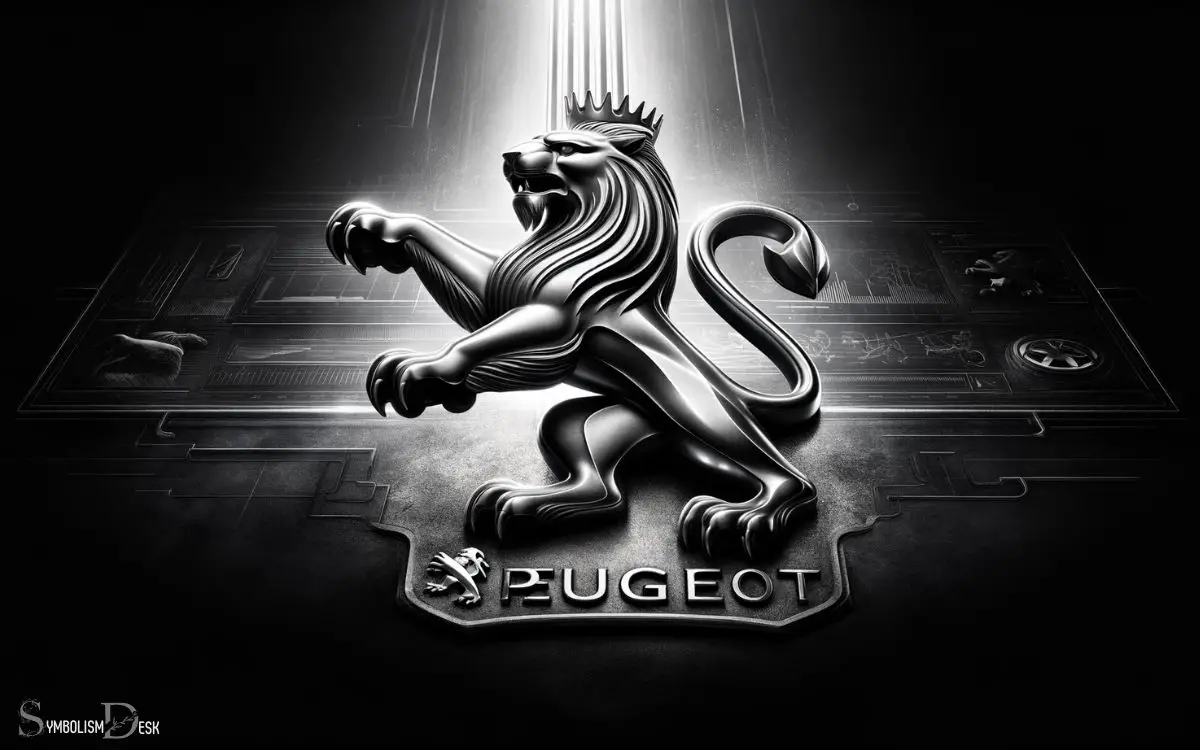
Here are some key points about the Peugeot lion emblem:
- The lion emblem was first introduced in 1847, symbolizing the durability of the company’s products.
- In 1858, the Peugeot family added lion’s claws to the emblem, signifying flexibility and adaptability.
- The lion’s posture has evolved over the years, reflecting the brand’s progress and innovation.
- The emblem’s mane represents the company’s resilience and determination to overcome challenges.
- Peugeot’s decision to retain the lion emblem underscores its commitment to tradition and quality craftsmanship.
The lion emblem continues to be a powerful symbol of Peugeot’s identity and values.
Volkswagen: The Origins of the VW Logo
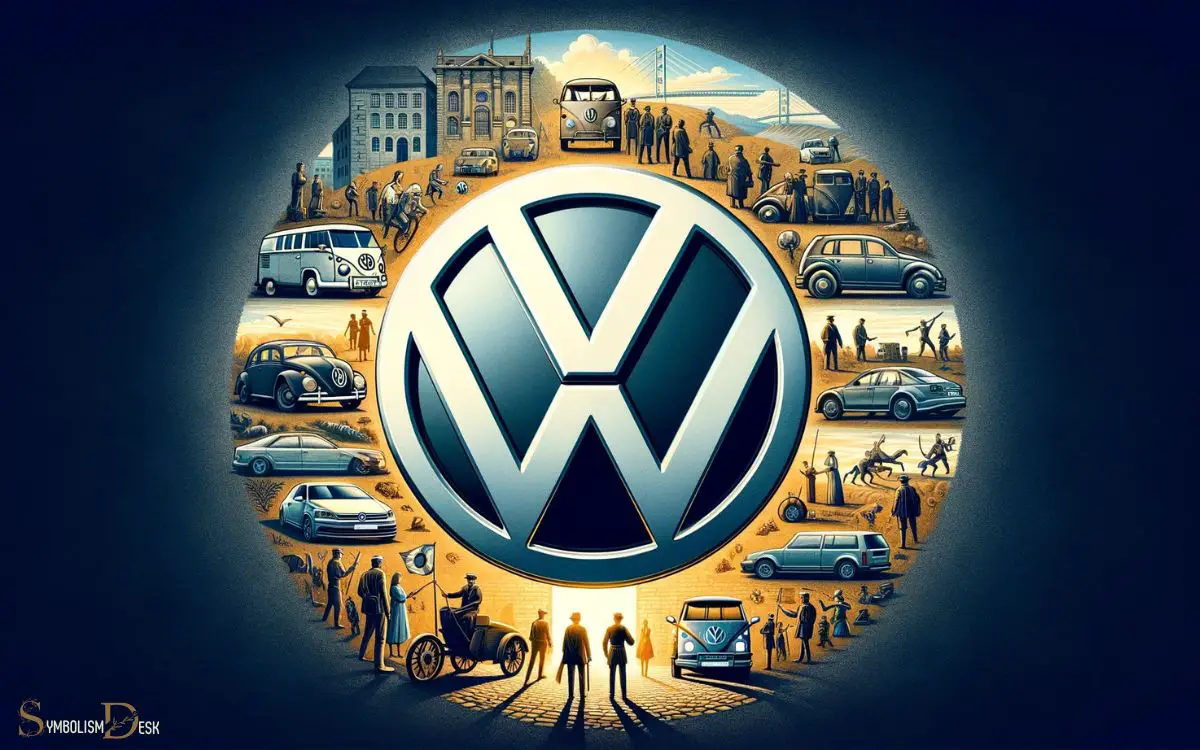
Volkswagen’s logo has a history that dates back to the company’s early years. The iconic VW emblem is a combination of the letters “V” and “W,” representing “Volkswagen” in German, and is enclosed within a circle.
The logo has evolved over time, with its roots tracing back to the 1920s when the company was founded. The original design underwent several modifications before the current version was introduced.
The logo’s simplicity and symmetry reflect the brand’s values of reliability, quality, and timeless design.
Conclusion
In the world of European car symbols and names, each emblem tells a unique story of heritage and legacy.
From the iconic BMW roundel to the powerful Ferrari prancing horse, these symbols are more than just logos – they are a reflection of the brand’s identity and history.
Just as a coat of arms represents a noble family, these car emblems represent the pride and legacy of their respective man

